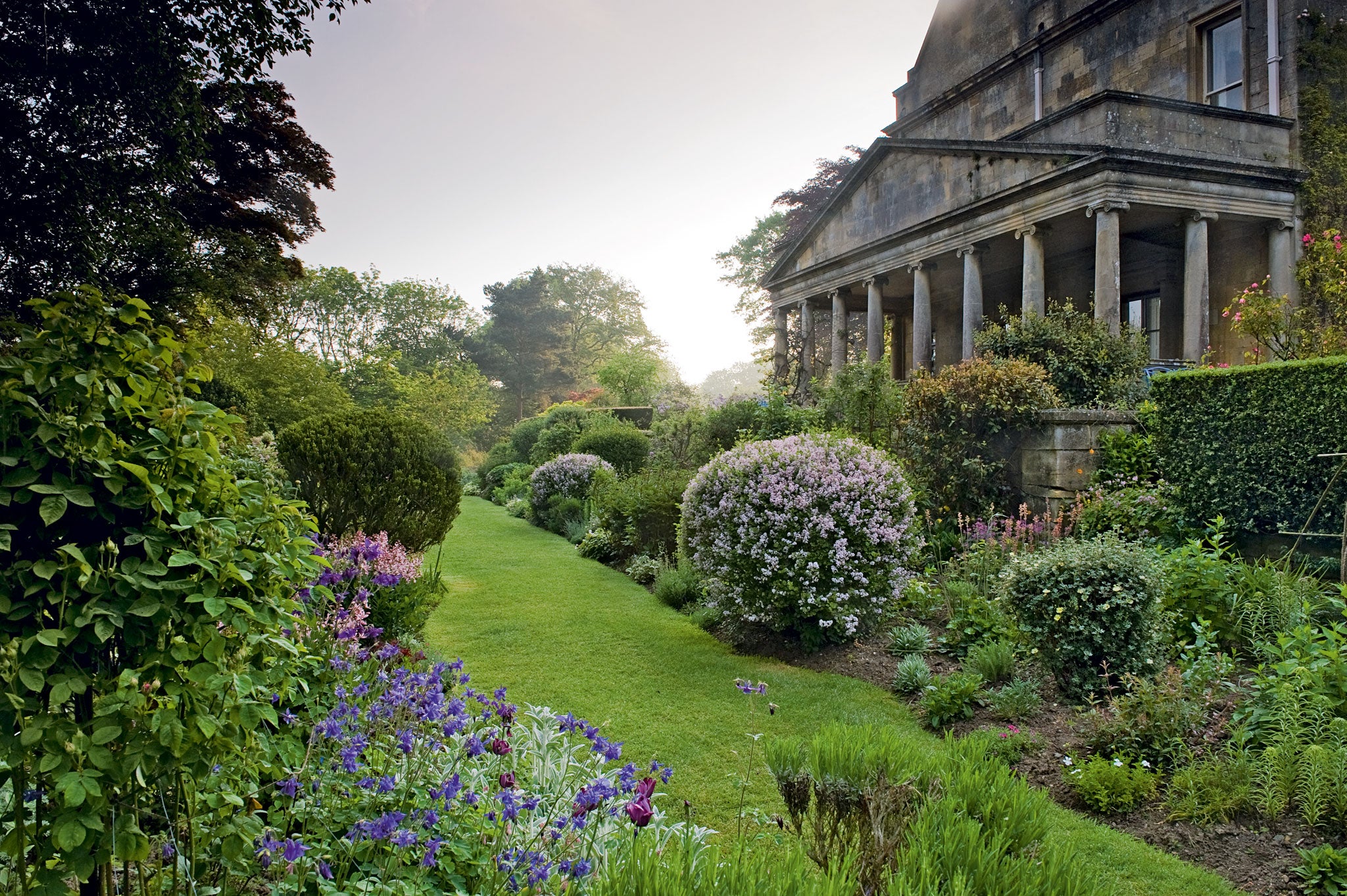George Plumptre's new book delivers a paean to the English love for country-house gardens

Your support helps us to tell the story
From reproductive rights to climate change to Big Tech, The Independent is on the ground when the story is developing. Whether it's investigating the financials of Elon Musk's pro-Trump PAC or producing our latest documentary, 'The A Word', which shines a light on the American women fighting for reproductive rights, we know how important it is to parse out the facts from the messaging.
At such a critical moment in US history, we need reporters on the ground. Your donation allows us to keep sending journalists to speak to both sides of the story.
The Independent is trusted by Americans across the entire political spectrum. And unlike many other quality news outlets, we choose not to lock Americans out of our reporting and analysis with paywalls. We believe quality journalism should be available to everyone, paid for by those who can afford it.
Your support makes all the difference.End of the summer: art galleries are packing up their temporary exhibitions ready to send the works home, so I dashed to Tate Britain to catch the last week of British Folk Art. Wandering around, admiring gigantic men made of straw and carpets woven by sailors to include images of fine ships on the ocean wave, I realised how often gardening crops up as a Special Talent of These Isles.
Here's a film called The House that Jack Built, narrated in that hilarious 1950s voice, showing how the eccentric and amazingly named Jack Punter threw himself into fashioning crocodiles from concrete for his garden pond; here are 18th-century paintings of a newly enthused landowner, overseeing the digging of holes for his plants. There are images of early 20th-century well-dressing, decking the village with elaborate floral art; in a landscape, there's a little greenhouse, lurking behind some trees, which will never now reveal what was grown inside it.
We Brits are remarkably interested in gardening. Moreover, our gardens are our main vehicle for many of our creative impulses, in a country where really expressing ourselves has been something of a no-no. I've always been fascinated by front gardens, and how they are the one opportunity (beyond choosing a paint colour for the front door) that most people get to express their own aesthetic vision to the outside world.
My friend Ross and I once devised a scheme whereby we would have elaborate cards printed, to post through front doors, saying, "We have today very much enjoyed your front garden." This would turn the artistic statement into a dialogue, and also convey the appreciation you feel when someone actually bothers to do something beautiful, or even bonkers. (A house up the road with an elaborate plaster-of-paris wishing well, I'm thinking of here.)
On a scale much grander than the average front garden, The English Country House Garden by George Plumptre (£25, Frances Lincoln) records 25 gardens that show how we absolutely rock at gardening. Here are the Three Essentials, as Plumptre dubs them: Great Dixter, Hidcote and Sissinghurst. You'd have to be a dingbat to argue with that. Although I'm sure plenty will.
But the book also includes a variety of enticing, charming choices, including at least one – Folly Farm in Oxfordshire – that it's irritatingly impossible to set eyes on since passing to new owners. Yet, for the most part, these gardens not only show off, delightfully, the English talent for garden-making, they also declare the English liking, for the most part, for inviting people in for a cup of tea and a wander. The National Trust, and others, such as East Ruston Old Vicarage in Norfolk, are exceptionally welcoming, even maintaining a cheerful Facebook presence.
So what does make the English country-house garden these days? If you were thinking PG Wodehouse and Blandings Castle, turn to the sumptuous image of Broughton Castle, in Oxfordshire, and read it praised by no less a writer than Henry James. Then delight in the long grassy alleys and borders of herbaceous colour, which would provide the perfect setting for a bit of aristocratic tomfoolery.
But now flick forward to the castle's near neighbour, Broughton Grange, designed in 1992 as a completely new walled garden in the middle of a field for former banker Stephen Hester, who was savvy enough to employ Tom Stuart-Smith for the job. This garden is startling, original, and breathtakingly strange, though one can still imagine butlers carrying notes about assignations along its paths.
Stuart-Smith has made an extraordinary marriage at Broughton between old and new, and the photographs in the book capture the flow and oddness of it, all at once. You'd have to be plain daft not to see them as proof that the Special Talent of These Isles stands firm. Maybe I should get those cards printed, after all.
Join our commenting forum
Join thought-provoking conversations, follow other Independent readers and see their replies
Comments